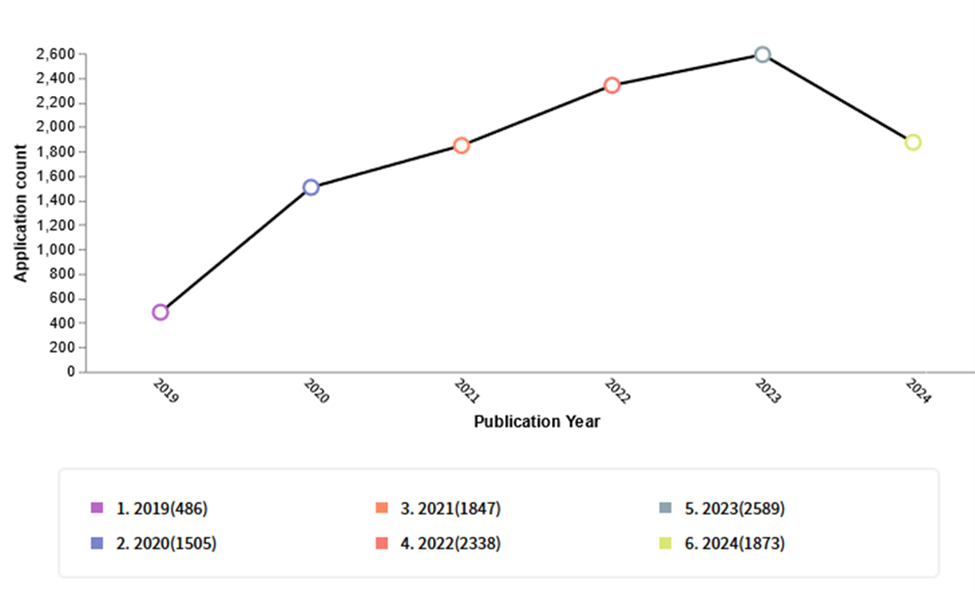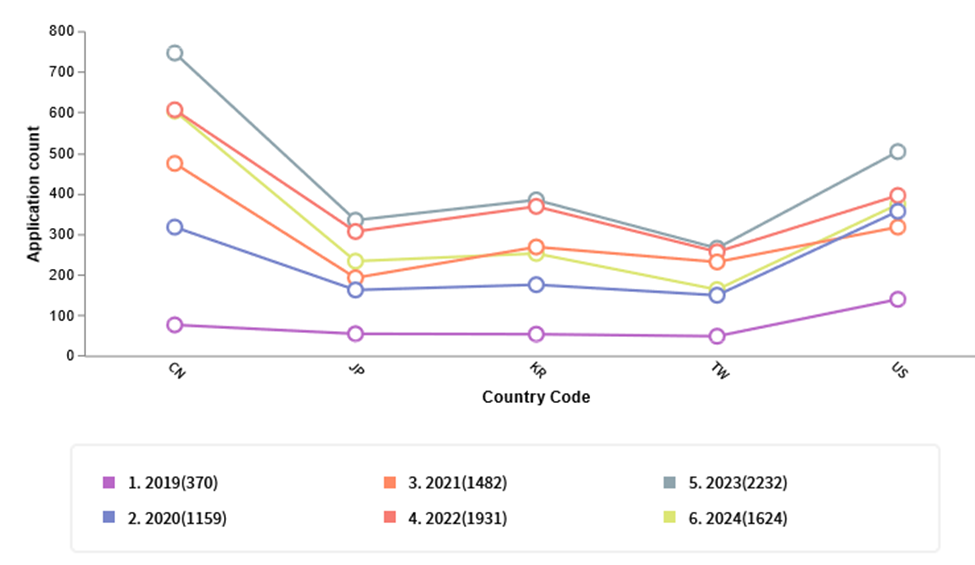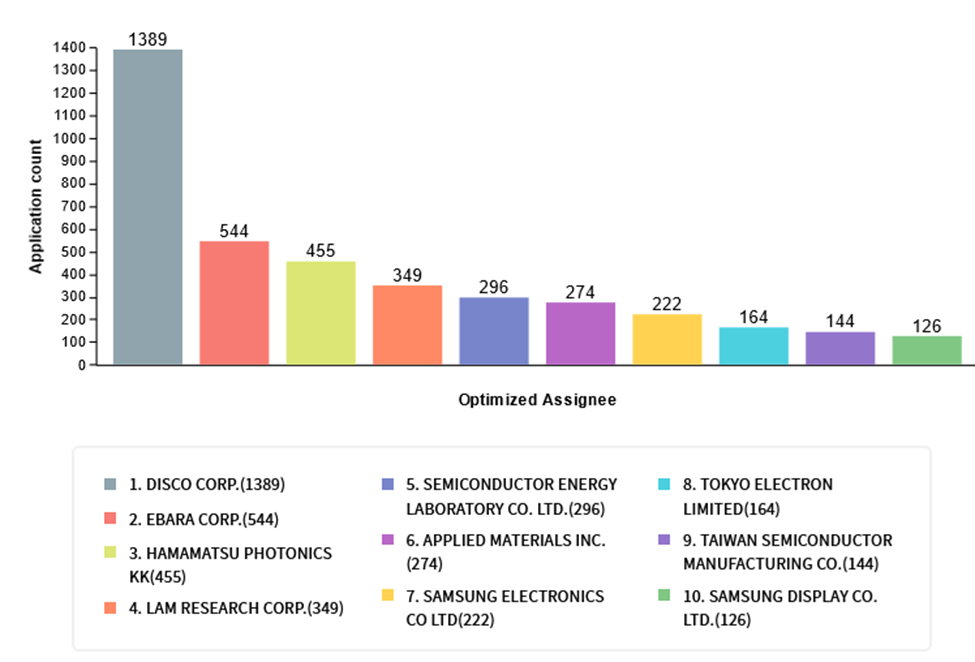The Indispensable Role of Patents in the Semiconductor Industry
The semiconductor industry is the engine behind our digital world, powering everything from smartphones to medical devices. Every year, we see innovations that push the boundaries of what’s possible—smaller chips, smarter devices, faster processing. But how do these cutting-edge technologies stay protected from imitation and generate revenue?
The answer lies in patents. In this blog, we’ll dive into how patents are essential to the semiconductor sector, from securing R&D investments to fostering global partnerships, and how they help shape the competitive landscape of this dynamic industry.
The Role of Intellectual Property in the Semiconductor Industry
Patents are the lifeblood of innovation in the semiconductor sector. They protect the intellectual property (IP) that companies invest significant time and resources into developing.
The fundamental idea is straightforward: without the exclusive rights that patents provide, there would be little incentive for companies to invest in new ideas, as competitors could easily copy the technology without putting in any of the effort or cost.
In the early days of semiconductor development, companies faced little standardization, leading to an industry fragmented across different technologies and methods.
The introduction of electronic design automation (EDA) in the 1980s was a game-changer, allowing more efficient and standardized designs that paved the way for the rapid growth of semiconductor IP and cross-company collaboration.
A total of 10638 applications published in the last 5 years.
Year wise publications:

Source: Derwent Innovation
Application in top countries:

Source: Derwent Innovation
Are Patents Crucial for Generating Revenue in Semiconductors?
The semiconductor industry is one of the most prolific in terms of patent filings, with thousands of new patents each year covering everything from memory chips to fabrication processes. However, patents alone may not guarantee revenue generation.
According to Rosemarie Ham Ziedonis from the University of Michigan Business School, four critical factors—manufacturing capabilities, design capabilities, lead time, and secrecy—play pivotal roles in determining the profitability of R&D investments.
While patents do not directly create revenue, they provide a competitive advantage, help secure market share, and protect valuable innovations.
Top Assignees: last 5 years

Source: Derwent Innovation
The Evolution of Patent Law in the Semiconductor Industry
Patent law has evolved significantly since the inception of the semiconductor industry. In the 1980s, the establishment of specialized patent courts in the United States marked a turning point, providing stronger defense and better enforcement of patents.
However, opinions about the value of patents remain divided, especially considering the complex and often litigious nature of modern patent law.
As the industry continues to evolve, there’s ongoing debate about how well current patent frameworks protect innovations and whether reforms are needed to keep pace with rapid technological advances. This discussion becomes especially pertinent when considering the international scope of semiconductor patenting, with different countries holding different approaches to patent law and enforcement.
Who Files Semiconductor Patents?
The filing of semiconductor patents has shifted over the years, with foundries, designers, and software companies now all playing a role. Traditionally, software and design companies were the primary patent filers, but foundries have increasingly joined in as the lines between different areas of the semiconductor value chain have blurred.
Internationally, the United States is the largest filer of semiconductor patents, with more than 43,000 applications out of 53,000 globally. Taiwan, Korea, and Japan also have significant filings, reflecting their positions in semiconductor manufacturing and design. While China has a smaller percentage of patents, its application volume is growing rapidly, hinting at an aggressive push to become a leading player in the semiconductor domain.
Challenges in Protecting Semiconductor Patents
Defending semiconductor IP is particularly challenging due to the microscopic scale at which these technologies operate. Determining whether a patent has been infringed upon can require detailed analysis and specialized tools, such as electron microscopes. This makes it essential for semiconductor patents to be written comprehensively, ensuring that they can be effectively enforced.
Patent protection in the semiconductor industry also faces the challenge of navigating a “patent thicket”—an overabundance of patents that can make it difficult for companies to innovate without infringing on someone else’s IP. Conducting thorough prior art searches, employing patent professionals with domain expertise, and building a robust patent portfolio are all essential strategies to mitigate infringement risks.
VLSI vs. Intel
In the VLSI v Intel case, VLSI sued Intel for infringing two patents—U.S. Patent No. 7,523,373 and U.S. Patent No. 7,725,759. The ‘373 Patent, covering memory voltage control, was found to be literally infringed by Intel’s Haswell and Broadwell microprocessors, though the Federal Circuit vacated the damage award for retrial. The ‘759 Patent, involving clock speed management, was found to have been infringed under the doctrine of equivalents, but the Federal Circuit reversed this decision, ruling that VLSI failed to prove the equivalence adequately. The court emphasized the importance of specificity in proving equivalence, highlighting that each element must be shown to be substantially similar in function, way, and result. The case illustrates the limited application of the Doctrine of Equivalents and the need for precise proof.
Crafting a Robust Patent Strategy for Semiconductors
In the fast-paced semiconductor industry, a proactive patent strategy can set companies apart. Key components of an effective strategy include:
- Early and Comprehensive Patent Filings: Filing early and comprehensively is critical. Broad claims can provide extensive protection, while specific claims ensure competitors cannot make minor changes to circumvent patents.
- Geographic Considerations: Given the global nature of the industry, it is essential to file patents in key markets—not just where manufacturing takes place but also where products are sold.
- Managing Patent Thickets: Semiconductor companies need to conduct prior art searches and leverage comprehensive patent databases to avoid infringement. Defensive patenting, or acquiring patents to counter potential claims, is another effective strategy.
Conclusion:
Patents are the backbone of innovation in the semiconductor world—safeguarding massive R&D investments, driving strategic partnerships, and offering competitive leverage. In an industry defined by rapid advancement and microscopic precision, having an effective patent strategy isn’t just about legal protection—it’s about securing your future in a global market.
At LegalAdvantage, we bring deep expertise in the semiconductors and electronics domain, ensuring that your innovations are fully protected. Our experts take a consultative approach, providing tailored guidance to help navigate the complexities of patent law and maximize your invention’s potential for being granted a patent.
As semiconductors evolve towards new frontiers like quantum computing and bio-electronics, a well-executed patent approach will be a critical differentiator, turning cutting-edge technology into market dominance.

